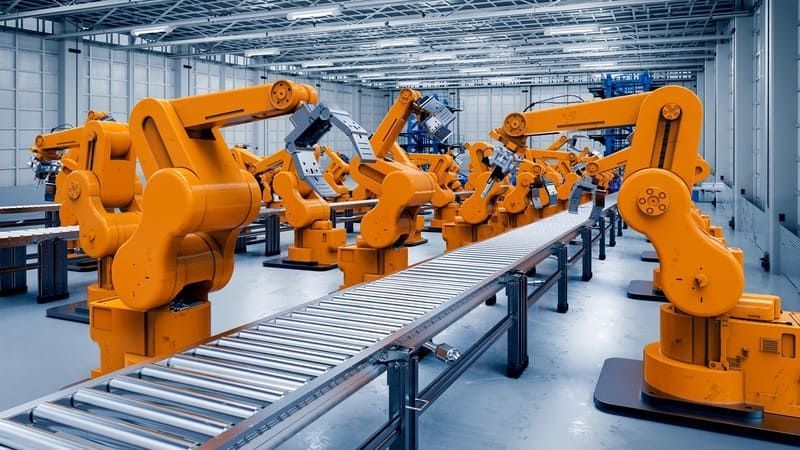LEAN application: old stories in a new context
(TBKTSG Online) - LEAN, roughly speaking as a lean production method, has long been applied in Vietnamese enterprises, but not many businesses have been successful and this needs to be reviewed in the context of today's integration.

Photos of delegates attending the conference this morning. Photo: Da Quyen
Speaking at the seminar "Lean thinking - change thinking" organized by Vietnam Supply Chain (1) this morning (August 26), Mr. Pieter Pennings, Director of the Small and Medium Enterprise Support Program According to Vietnam at Vietnam Supply Chain, most businesses want to achieve results when implementing LEAN, but really only about 2% of businesses succeed, the rest most feel "tired" and have not achieved the results. be effective as expected (2).
This, according to Mr. Pennings, needs to change because in today's integration period, the effective implementation of LEAN is an important factor to help enterprises increase their competitive strength with foreign competitors.
The reasons leading to the failure of LEAN implementation are many, but in general, according to the speakers at the seminar, the main problem lies in the business leadership not feeling the need to change, must apply LEAN and not determined to pursue the implementation of LEAN in the enterprise.
In his presentation, Mr. Ngo Cong Truong - Director of the consulting firm John & Partners, shared that there are many businesses he consults that always question why they need to change when they are leading. industry leader.
Even at the conference, a delegate also raised the same problem when asking why change and how to convince employees to change when everything is working so well, revenue increases every two years. numbers?
With this question, Mr. Truong started with the business story he advised.
"When businesses assert that they are leading in the industry and there is no reason to change, I ask them where they are leading: quality, revenue, market share... Then collect data. , compare and show them the position they really stand in the industry compared to domestic and regional enterprises. Only then will they realize that the leading position is just what they imagined," he said. Truong told and asked the opposite question to the delegate that the important thing is that your business is very good but good compared to who?
Continuing the story of why it had to change, Mr. Truong cited the example of a Nokia representative saying during the announcement of Microsoft's acquisition, "we did nothing wrong, but, in a way, we failed". Another example given by Mr. Truong is the case of Miliket instant noodles, which once dominated the Vietnamese noodle market, but now this brand only accounts for about 2% of the market share.
In short, according to Mr. Truong, the first principle is that change happens only when business leaders feel the urgency to change. And to manage change, Mr. Truong shared more about the 8-step change model created by expert John Kotter for everyone to have an overview and reference.
Adding a perspective on the change story, Mr. Tran Ngoc Minh Tri, South Asia LEAN Program Manager, Decathlon Vietnam Co., Ltd., said that change only happens when people see the benefits involved. directly that change brings. Because, if there are no benefits attached, even if people clearly understand the need for change, people will not have the motivation to make it.
Illustrating his comments, Mr. Tri gave an example of implementing the LEAN project at two different factories. One success, one failure. A key element of a successful project was the consensus that the additional revenue and profit resulting from the improvement would be retained by the factory and not transferred to the corporation.
Before concluding his presentation, Mr. Tri asked everyone to play a small game, starting with writing "Continuous Improve" with their right hand, then writing with their left hand to improve. feel the change. Thereby, he wanted to convey the message that change is always difficult and therefore, it is necessary to have a benefit motive as a driving force for change and note that benefits are not always money but Each location can offer different benefits.
(1) Vietnam Supply Chain is an independent non-profit organization established in 2008 to help share knowledge and activities in the supply chain industry in Vietnam.
(2) The above survey results were conducted by Vietnam Supply Chain in Vietnam in 2016 with the participation of about 100 enterprises, 80 of which operate in the manufacturing sector, and the rest operate in the field of manufacturing service.
Giới thiệu John&Partners
Chính sách chung
Việt Nam
Email: public@john-partners.com
Điện thoại: (84) 77 5955 007
Hồ Chí Minh City
- 3C Phổ Quang, Phường 02, Quận Tân Bình,
TP. Hồ Chí Minh
- Điện thoại: (84) 916 350 421
Hà Nội
Hoa Kỳ
- The Cannon @ the Energy Corridor1334 Brittmoore RoadHouston, TX 77043.
- Điện thoại: +1 832 202 8968
- Email: trangnguyen@john-partners.com
© 2024
All Rights Reserved | Công ty Cổ phần Tư vấn và Giáo dục John&Partners







